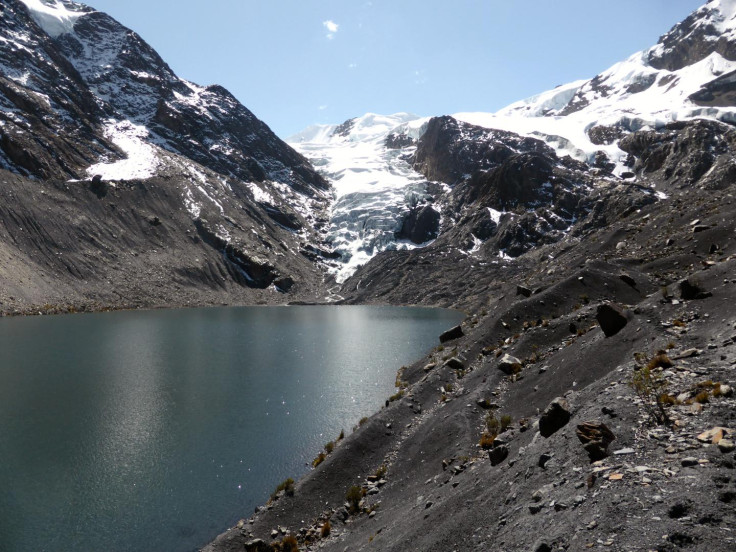After Lake Poopó, it's Bolivia's glaciers that are at risk of disappearing
Rising temperatures have led to reduction of glaciers surface in the Bolivian Andes by 43%.
Bolivian glaciers are receding at a quick pace and will continue to shrink if temperatures continue to rise in the region, scientists warn. This could have devastating consequences for local communities as glaciers leave behind lakes that can end up flooding villages.
Bolivia is one of South America's poorest country with a quarter of the total population considered to be living in conditions of extreme poverty. This is made even worse by the negative effects of climate change – rising temperatures and droughts in the Bolivian Andean plains have taken their toll on the environment, depriving families from much needed natural resources.
The most dramatic example of this may be the drying out of iconic Lake Poopó, which was officially declared evaporated in December 2015. Many people depended on it to make a living and have had to leave the region.
In this new study, published in the Cryosphere, a European Geosciences Union journal, researchers have investigated another worrying phenomenon – receding glaciers. They wanted to know what long-term risks communities living near those glaciers faced.
The scientists used satellite images from Landsat, the US Geological Survey's and NASA's Earth observation programme, analysing the evolution of glaciers over the course of the past three decades.

They discovered that the area of the Bolivian Andes covered by glaciers decreased by about 43% – from about 530sq-km in 1986 to only around 300 square kilometres in 2014. This decrease will continue to occur if temperatures continue to rise.
Risk of flooding
Perhaps the most significant risk associated with receding glaciers is that they increase the risk of floods for the local rural communities. "Glacier recession is leaving lakes that could burst and wash away villages or infrastructure downstream," says lead-author Simon Cook, a lecturer at the Manchester Metropolitan University in the UK.
These glacial lakes are usually dammed by bedrocks and glacial debris and the concern is that if these dams are breached, the water could flood nearby areas – a phenomenon known as glacial lake outburst floods. The study suggests that the number and the size of these lakes has increased since 1986. The scientists have attempted to pinpoint which of them were more threatening to local populations and came up with a list of 25 lakes across the Bolivian Andes.
"We considered that a lake was dangerous if there were settlements or infrastructure down-valley from the lake, and if the slopes and glaciers around the lake were very steep, meaning that they could shed ice or snow or rock into the lake, which would cause it to overtop and generate a flood – a bit like jumping into a swimming pool, but on a much bigger scale," Cook says.
If the biggest of these lakes overflowed, it would result in a discharge of an amount of water 50 times the volume of an Olympic swimming pool, in a second. The effects on local populations would be disastrous, with potential human loss of lives, death of cattle, destruction of cultivated fields and of communication routes outside remote villages. The risks of receding glacier and glacial lakes are thus significant for these communities.

Access to water in cities
Paradoxically, melting glaciers could also leave urban areas deprived of drinking water. The study predicts that glacier area will be reduced by the end of the century, to about a tenth of the 1986 values, increasing the risk of water scarcity in cities.
"We predicted in our study that most glaciers will be gone or much diminished by the end of the century – so where will the water come from in the dry season? Big cities like La Paz are partially dependent on meltwater from glaciers. But little is known about potential water resource stress in more remote areas. More work needs to be done on this issue," Cook concludes.
© Copyright IBTimes 2025. All rights reserved.






















